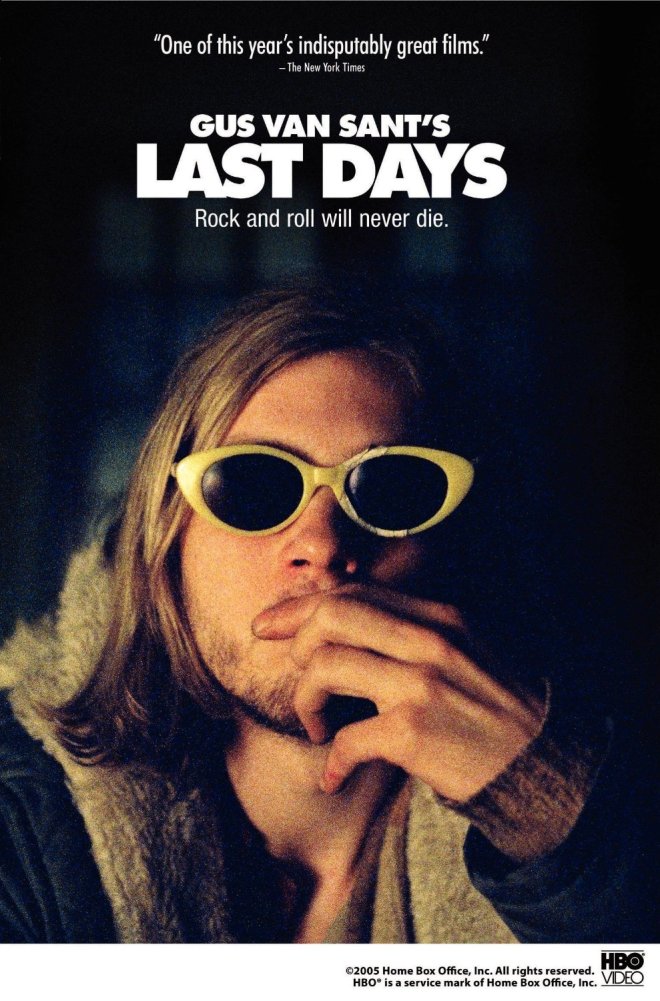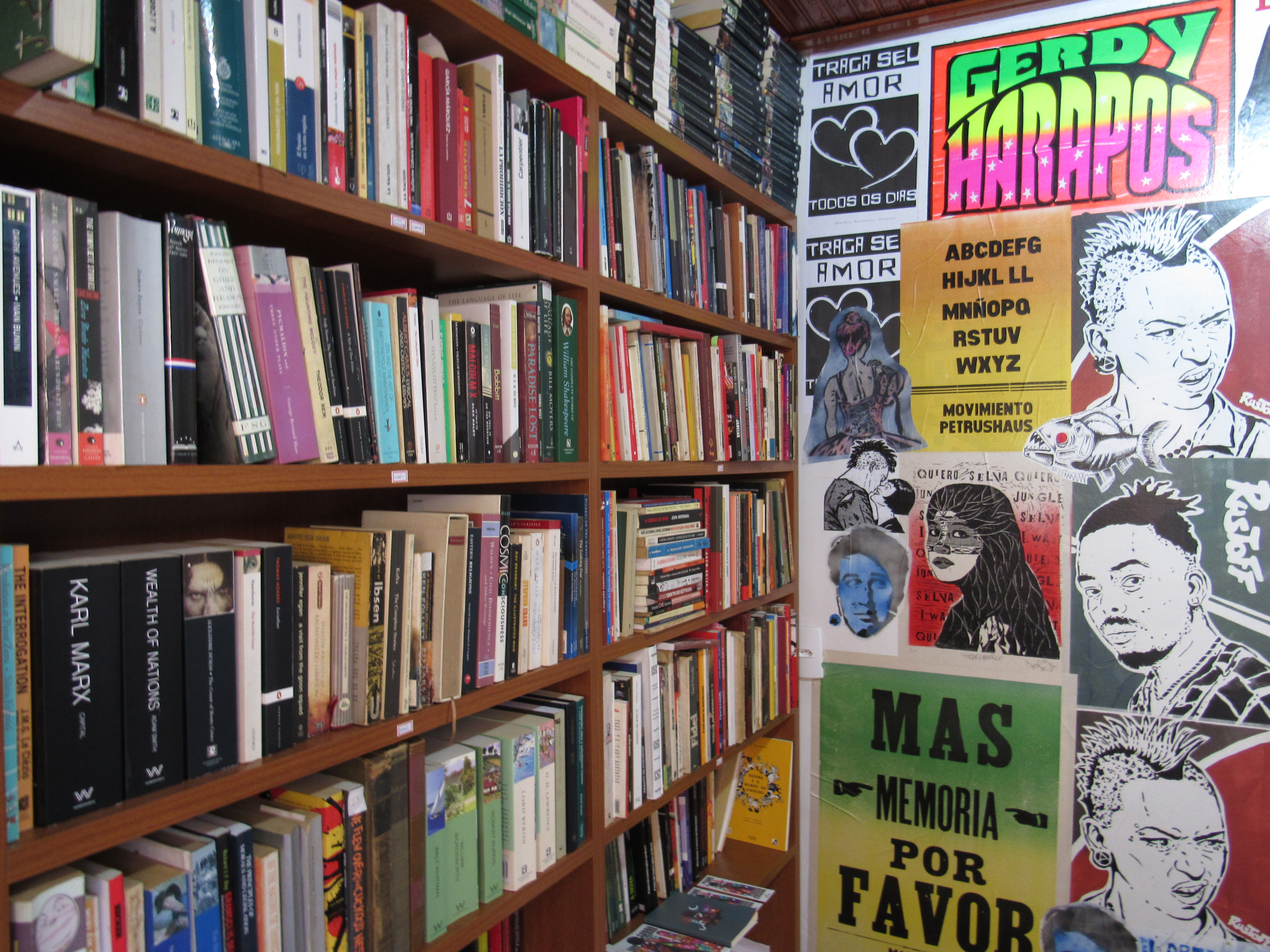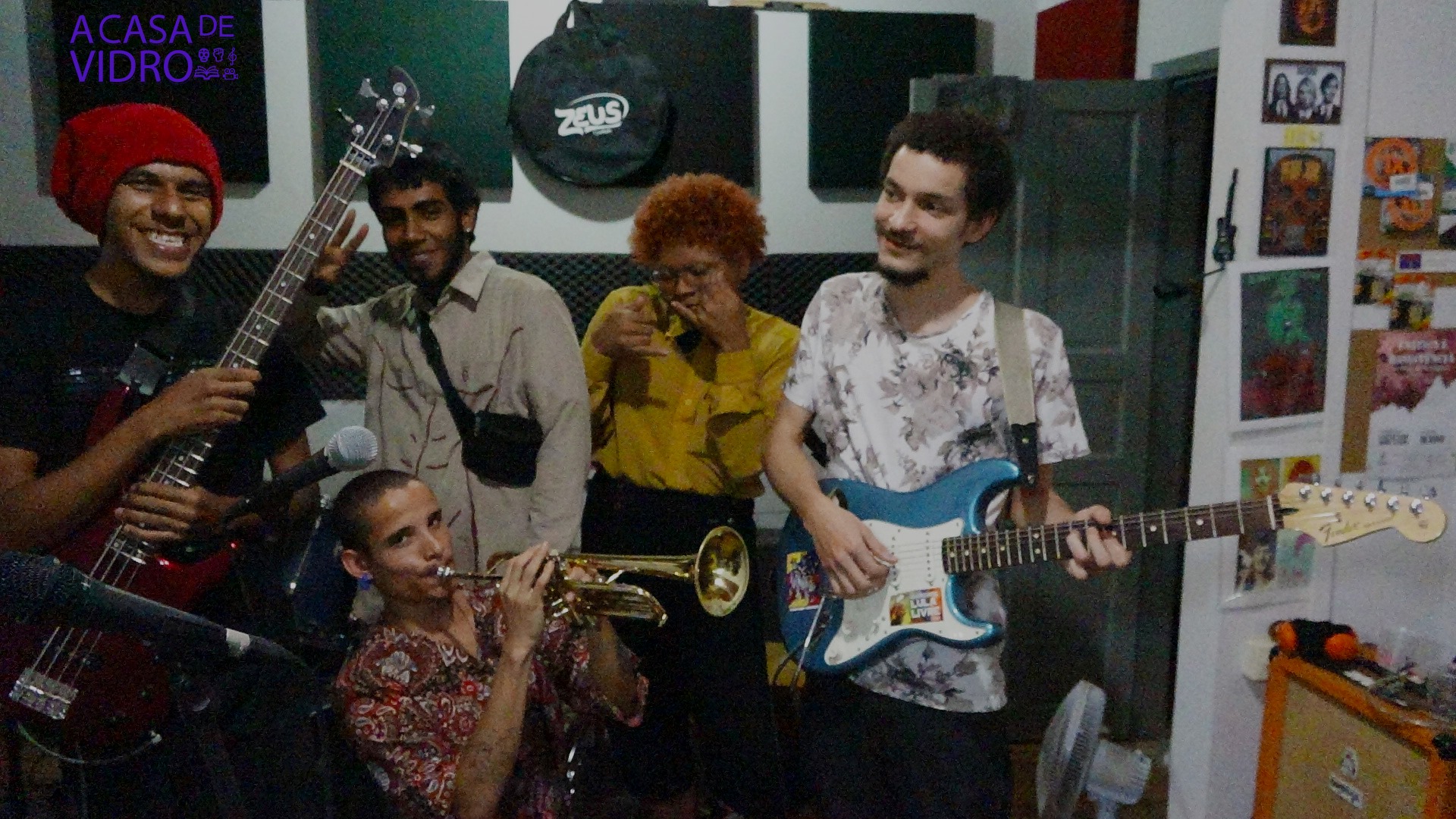“It’s better to burn out than to fade away” – 20 Anos Sem Kurt Cobain (1967-1994)
It seems to me quite ironic and ambiguous that a band named Nirvana was actually the living and struggling embodiment of what Buddhists call Samsara. As if he was bound to the wheel of craving and suffering, Kurt Cobain screamed his guts out just like I imagine Prometheus (so beautifully depicted in Rubens’ painting) screamed day after day as the eagle devoured his liver. Nirvana is perhaps the most tragic rock and roll band there was, seen from the perspective of Cobain’s death, but it ‘s also one of the most exciting pages of rock history in the 1990s. It inspired us, with its punkish courage, to take mainstream culture by assault. Off with commercial shitty kitsch! He wanted art to be undiluted expression of raw and true emotion, communicated through the means of songs bursting with juvenile energy, suicidal tendencies, drug experiences, Beatlemania, and an up-bringing in what he called “a punk rock world”.
He violently departed from us, 20 years ago, in April 1994, by blowing his brains out with a shotgun on his 1-million-dollar mansion, chez lui on Trigger-Happy America. When he chose suicide as a way-out-of-the-Samsarian-mess, his daughter Frances was 20 months old and couldn’t possibly understand anything about the struggles of a heroin addict with his condition as an international pop-superstar. Singing as if he was a tree rooted in dark angry soil, his voice seemed to arise from an abyss of suffering, especially located in an intense point of pain inside his belly. That invisible wound made tremendously audible by his music rang so true and filled with authenticity, in an era of poseurs and fakers and hair-metal yuppie cowshit. Lester Bangs once wrote that “expression of passion was why music was invented in the first place”, and Cobain also seemed to believe in this – and he wasn’t ashamed to put his “dark” emotional side, from depression and paranoia to sociophobia and alienation, to craft the punk-rock hymns that turned him unwillingly into The Spokesman Of A Generation. Extraordinarily capable of expressing his feelings, Cobain’s heart poured out of himself like lava from a volcano, letting us peek through a sonic keyhole into the labyrinths of an anguished life seeking release and craving for pain to end.
Cobain’s musicianship was spectacularly exciting and innovative – even though he borrowed a lot from a similar heavy, distorted and fast guitar-sound, similar to the one invented and mastered in previous decades by Johnny Ramones and Mick Joneses – he created out of that something that was distinguishable his own. Cherishing intensity rather than complexity, and emotional catharsis more than rational self-controlness, Nirvana’s music carried within it some much power that the whole thing mushroomed into one of those rares episode in music history when a band becomes History, defines an Era, before burning-out instead of fading-away. I call them “The Exploding Stars”. I would argue, If you permit me to trip a little bit on some stoned hypotheses, that Cobain’s voice spoke to millions, and his music stirred up such an intense commotion, because of the authentic and desperate artistical expression that he was able to create out of his Samsarian suffering. In 1991, the kitsch of American pop culture – from Michael Jackson to Guns’N’Roses – was suddenly kicked in the butt by the 1990s equivalent to MC5’s Kick Out The Jams to the 1960s and Nevermind The Bollocks, Here’ The Sex Pistols to the 1970s.
And here we are, 20 years after he took a shortcut into that land which no voyager ever comes back from (like Shakespeare’s Hamlet said), discussing his legacy and trying to understand his life and his death. Violent deaths occur every day and all the time, of course, and why should the death of a rock star be made so much fuzz about? The thing is: American Culture is deeply influenced by the realm of Pop, which is a money-making-machine mainly, of course, but sometimes explodes out of control and becomes a cultural force that manages to transcend the markets. It becomes something to be dealt with by Art History, by Sociology, by Philosophy, by Anthropology, by Existential Psychology etc. Or do you perhaps think that the more than 60 people who committed copycat suicides after Cobain’s demise in 1994 related to Cobain only as consumers do with manufacturers of products? Could we possibly say that the more than 5.000 people who went to his funeral, and joined in a candlelight vigil, were merely mourning because they had lost one of their hired entertainers? What about more than 50 million records sold (how many billions of downloads, I wonder?): did all these listeners heard Cobain just as a manufactured commodity? No! Cobain had an authenticity arising from the trueness of feeling underlying his music, and this set him apart from everything that was going on in “Mainstream American Culture” in that era.
Nirvana kicked the door to the ground for Underground America to step into the spotlight in 1991, “The Year that Punk Broke” (when Sonic Youth signed to a major; when Pearl Jam and Soundgarden skyrocketed to the top of charts; when Seattle’s scene became “The Big Thing” in a process juicily conveyed by Hype! , the documentary). Violent and untimely deaths happened all around Cobain while he experienced and interacted with people from the music scenes of Aberdeen, Olympia, Tacoma and Seattle. Prior to Cobain’s suicide, there had been other tragedies in Seattle Rock City: for example, Mia Zapata‘s cold-blooded murder in July 1993, when the singer-songwriter of The Gits (one of the awesomest “grunge” bands that never made it to the Mass Media…) was raped and killed after leaving a bar in Seattle. Or the fatal-OD that took to an early grave Andrew Wood, singer in Mother Love Bone (whose remaining members went on to build Temple of The Dog and then Pearl Jam).
* * * * *
TWO GRUNGY TRAGEDIES BEFORE COBAIN: MIA ZAPATA’s murder (watch below the full The Gits doc) and ANDREW WOOD’s fatal OD (listen below to the tribute album by Temple Of The Dog, wich contains the grungy-hymn in which Eddie Vedder and Chris Cornell share vocal duties, “Hunger Strike”).
[youtube id=http://youtu.be/CcmuWUCkfH8]
[youtube id=http://youtu.be/_bwKljmiCrk]
* * * * *
Suicide is common currency in rock’n’roll mythology. The Who had screamed in the 1960s, for a whole generation to hear: “I hope I die before I get old”. Neil Young’s “Hey Hey My My” stated that “it’s better to burn out than to fade away” – a phrase later to become one of the most quoted from Cobain’ suicide letter. The Dead-at-27 Club had already a plentiful of members – Hendrix, Morrison, Janis… – when Nirvana’s lead singer joined them on this fraternity of bones. His originality was in his means-of-death: he was the first of them to have commited suicide. But did he really choose to leave life in order to become myth? Or such ambitions were not the case for someone craving to escape a labyrinth of angst, rage, stomach-aches, annoying fame, never-ending tours and chronical dissatisfaction? To get back to my point in the beggining of this trip: isn’t suicide, in Cobain’s case, an succesfull attempt simply to blow to smithereens the whole damned Samsara? After all, this man was an extremist not only in art but also in life, and it’s quite possible he entertained extreme notions about what Nirvana was all about.
Nirvana’s music was not Zen at all – it was the sound of fury delivered in packages of Beatlesque melody and punkish attitude. When, 20 years ago today, he chose utter self-destruction, this was hardly a surprising ending for someone who had talked openly about suicide for years and years, and who had previously attempted it some times before, and who almost named the follow-up to Nevermind with the phrase I Hate Mysef And I Want To Die… Not surprising, but still mysterious and fascinating and hard to fully understand. Some writers and interpreters see Cobain’s suicide as something despicable, and criticize him for being a sell-out who couldn’t enjoy his success, or a kid who couldn’t stand his “tummy-ache” and chose some dumb radical medicine. In his article “An Icon of Alienation”, Jonathan Freedland writes, for example, about Cobain’s Last Days (also portrayed in cinema by Gus Van Sant):
“Generation X-ers are meant to be the slacker generation, yet here was the slacker-in-chief living the yuppie dream: married, padding around a $1.1 million luxury mansion with a garden for his baby daughter to play in, and Microsoft and Boeing executives for neighbours. It proved to be no refuge for Kurt Cobain, the boy who had come from blue-collar nowhere and made himself an international star and millionaire. Holed up inside the house overlooking the perfume-scented lake, he pumped his veins full of heroin, wrote his rambling suicide note, and did so much damage to his head that police could only identify his body through fingerprints. Dental records were no use, because nothing was left of his mouth.” – JONATHAN FREEDLAND, An Icon Of Alienation.
Some say some sort of suicide gene or tragic curse ran in the Cobain family: three of Kurt’s uncles had killed themselves. But the picture, of course, is much more complex than the “family tree” explanations wants to admit. It’s well known that Kurt Cobain was deeply pained both by stomach-aches and by childhood traumas (he was, every journalist repeated to exhaustion, the “son of a broken home”). His heroin-addiction, which he justified as a means of self-medication, it seems to relate also to some frantic need to numb his existential discomfort and disgust, to reach periodically some “artificial paradises” similar to the ones experienced by Baudelaire, De Quincey, Burroughs, Ken Kesey and tons of other artists and mystics. But no explanation of his bloody choice of escape from life can be convincing without a discussion about Celebrity, Fame, Success. As Will Hermes wrote in Rolling Stone magazine: “The singer-songwriter, who wrestled with medical problems and the drugs he took to keep them at bay, was also deeply conflicted about his fame, craving and rejecting it.”
That’s what makes Nirvana so interesting: a punk band kicking out the jams in Sub Pop records turns into the highest-selling band in the world and becomes rich on the payroll of a major record company – Geffen. I would like to attempt to reflect briefly upon some of the reasons that explain Cobain’s suicide, but without venturing to give a comprehensive biography of the man or his band – a job already done brilliantly by Charles Cross’s Louder Than Heaven, by the Nirvana bio written by Everett True, or by the documentary About a Son by A. J. Schnack.
Let’s head back to 1991, when Nevermind exploded into the mainstream pop arena and became a cultural phenomenon of huge proportions. This landmark album wasn’t only a big commercial hit, destined to sell more than 30 million copies worldwide. It wasn’t only one of the greatest rock’n’roll albums ever made, with songs so powerful that Simon Williams describes them as “savage indictments of the rock ethos, eye-bulging, larynx-blistering screamalongs”. It wasn’t only a passing fancy of youngsters who would completely forget about the band when the next wave of pop novelties came along. Nevermind was an era-defining masterpiece of epic proportions, the most important album of the whole grunge era, the record that stands out in the 1990s as something unique and unsurpassed. It kicked out the jams with its raw power and heartfelt catharsis, and finally punk rock aesthetics and ethics became common currency and were delivered to the astonished masses. “Smells Like Teen Spirit”, a song named jokingly after a deodorant, and in which Cobain said he was merely ripping off The Pixies, took MTV by storm in 1991 and buried for awhile the Disco-Yuppie-Crap and the Hair-Metal-Bullshit. It kick-started the Grunge Era and opened the gates wide open for the Seattle scene to become immensely influential through Pearl Jam, Alice in Chains, Soundgarden, Mudhoney, The Screaming Trees, and many others. For the first time ever in the U.S., it seemed like Punk Rock was gonna win its battle and inject rebelliousness and dissent into the veins of American suffering from a hangover after the Reagan-years in Shopping Centerish Yuppie America.
“Nirvana have also been seen in sociological terms: as defining a new generation, the twentysomething ‘slackers’ who have retreated from life; as telling unattractive home truths about a country losing its empire and hit by recession; as representing the final, delayed impact of British punk on America. They have also shocked people by trashing male gender codes: kissing each other on the national network show Saturday Night Live, appearing in dresses in the video for their single ‘In Bloom’, doing pro-gay benefits. We may be more used to this in Britain, but America is a country with much more machismo in its popular culture. A sensational appearance on last year’s globally broadcast MTV Awards, where they smashed their equipment and mocked rock competitors Guns N’Roses, sealed their status as America’s bad boys…” JON SAVAGE, Sounds Dirty – The Truth About Nirvana
Nirvana wasn’t political like The Clash, but yet they certainly did a political statement with their career. Kurt Cobain shoots himself in the head and his brains get splattered all over the American Dream – that thing that, George Carlin said, “you have to be asleep to believe in”. Nirvana was much more about a provocation, à la William Burroughs (Cobain’s favorite writer), on the despised Square Society of White America. It’s punkish agression against Yuppie bullshit. It states that music shouldn’t be seen only as product or merchandise, and that it can convey emotions that can “infect” large portions of society with its groove, its stamina, its mind-expansion and energy-raising powers.
Kurt Cobain could be described by psychopathologists as clinically depressed or bi-polar – it’s known he had familiarity with Ritalins and Lithiums and other creations of the Pharmacological Industries in Capitalist America. But Nirvana’s music is not only a downer – on the contrary, Nevermind cointained so much power that it seemed like it was capable of awakening a whole generation out of its lethargy and inaction. But Cobain couldn’t and wouldn’t be the “leader of a generation”, the preacher telling in the microfone for the converted masses which way to follow. He wouldn’t become a parody of himself (“I hope I die before I turn into Pete Townsend”, he said), he wouldn’t be a happy millionaire smiling for the papparazzis, he simply wouldn’t conform to letting Nirvana become a sell-out act of merely market-wise relevance. With his death, he turned Nirvana into a symbol for decades to come, a band never to be forgotten.
“The sleeve of Nevermind shows a baby swimming underwater towards a dollar bill on a fish hook. The intended meaning is clear: the loss of innocence, the Faustian contract that usually comes with money. Take it, but if you do, you’re hooked for life. It’s a parable of Nirvana’s current dilemma: they’ve taken the bait, but the contradictions of their success are threatening to tear them apart. How can the members of Nirvana retain their integrity, which is very important to them, in a situation which demands constant compromise? How can they sing from the point of view of an outsider now that they’re in a privileged position? How can they suffer relentless worldwide media exposure and still retain, in Grohl’s words, ‘the spontaneity and the energy of something fresh and new’ that has marked their career?” – JON SAVAGE
“Teenage angst paid off well, now I’m bored all old”: that was the statement that began In Utero’s sonic ride. In it, Cobain wants to take us with him on his downward spiral, never afraid to let the songs show his inner confusion and Samsarian suffering. He didn’t believe in a loving God acting as a Daddy up above on the clouds, looking out for their pet-children, but rather was seduced by Buddhist notions, for example that of Karma. Nirvana’s music seems like some sort of ritual of Karmic cleansing, in which Cobain attempts, through a visceral outpouring of emotions, especially the ones that are burdensome, to attain some release.
But he didn’t arrive at no Enlightnenment – not even plain and simple piece of mind. In Rome, March 1994, he attempts suicide with more than 50 pills of Roipnol. He couldn’t stand the never-ending tours, the stupid interviews, the persecution by papparazis, the fans acting like Neanderthals, the need to repeat for the thousandth time “Smells Like Teen Spirit” – even in those nights when we didn’t felt like doing it. He simply wasn’t able to “enjoy” the ride of popstardom inside the Commercial Machinery of Profit Seeking Corporate America. When Rolling Stone did a cover issue with Nirvana, Kurt Cobain wore a t-shirt that read: ‘CORPORATE MAGAZINES STILL SUCK’. Even tough he hated Corporate America, he was immersed in it, and it had the means for him to take his message to larger audiences instead of limiting himself to the narrow world of punk-rock and indie concerts where you only preach to the converted. Nirvana never did corporate rock, but instead they did dangerous music that the industry soon discovered that resounded with millions of people worldwide. To call them “sell-outs” is narrow-mindedness. They tried instead to deeply transform Mainstream culture by taking it by storm. This is one of the most influential bands in the history of rock because it inspired us to reclaim the airwaves out of the hands of those fuckers Terence McKenna talks about in “Reclaim Your Mind”:
[youtube id=http://youtu.be/-eu9GfHCpVo]
He never felt at ease or at home under the spotlight of mass media, gossip magazines, commercial TV shows. Always a punkish outsider and underdog that never quite fitted into the mainstream’s machinery of popstardom, he identified himself with feminists, oddballs, weirdos and other non-conformist and eccentric individuals and urban tribes. He despised pop icons like M. Jackson or Axl Rose, and loved The Pixies, The Raincoats, Young Marble Giants, all sorts of lo-fi and low-budget underground “indie” stuff. Even tough proto-grungers such as Husker Du’s Bob Mould, Black Flag’s Henry Rollins or The Replacements’ Paul Weterberg done something similar to Cobain both musically and lyrically, neither exploded internationally like Nirvana to wide-spread impact on thousands of lives.
I remember him as punk rock kid from a fucked-up town filled with macho-men rednecks, and who expressed his rage against mainstream American culture with extraordinary talent. I remember him as an aesthetic extremist who loved William Burroughs stoned literature, and who entertained himself in his Aberdeen years with peculiar fun such as watching Faces of Death after eating hallucinogenic mushrooms. I remember him also as a sometimes sensitive and tender guy who had pet-turtles in his bathtub and hated in his guts all sorts of homophobia, misoginy and Neanderthal stupidity. I remember him as a music geek that loved underground music and did everything in his power to invite his audience to listen to his favorite “indie” artists (like Pixies, Breeders, Meat Puppets, Vaselines, Daniel Johnston, Beat Happening, Flipper, Bikini Kill, Half Japanese, Billy Childish, Butthole Surfers…).
David Stubbs, in his article “I Hate Myself And I Want to Die”, writes:
“Rock’n’roll mythology is fed and defined by its occasional deaths. Usually, these are due to some excess or other – driving too fast, getting too high, taking too much, going too far, the romantic pushing back of life’s envelope, testing the limits, wanting too much, wanting it now, forfeiting tomorrow in the bargain. Rock’n’roll mythology dictates that its heroes die because they wanted to live too much. Kurt Cobain, however, didn’t want to live. He wanted to die.”
It can be said that he’s the most perfect embodiment in rock music of Nihilism, that cultural phenomenon which Nietzsche predicted, in the 19th century, that would become wide-spread. Cobain radically acted upon his nihilism, towards his self-destruction, what sets him apart from other famous nihilists, like Emil Cioran or Arthur Schopenhauer, who died of old age and so-called “natural causes”.
The man died, but his deeds are still with us, haunting us like Prometheu’s scream as he’s being eaten by an eagle, inspiring us like a Punk Monument to raw power in an age of slumber, provoking us like a tragic character which awakens us to a life that ain’t no picnic. There’s reason to mourn and get the paralysing blues when we considerer Cobain’s suicide, but there’s also reason to cherish and celebrate a life that has left a legacy that millions of us feel that have enriched our lives. Cobain struggled in Samsara and that makes him a member of a brotherhood called Humanity. Nirvana always sounded to me like the music of a brother, expressing what we, his brothers in suffering, also experienced but were unable to express so powerfully and unforgettably as he did.
[youtube id=http://youtu.be/Gmg825Qz0xs]
[youtube id=http://youtu.be/2fzsHDIWrqo]
Publicado em: 09/04/14
De autoria: casadevidro247











comentários